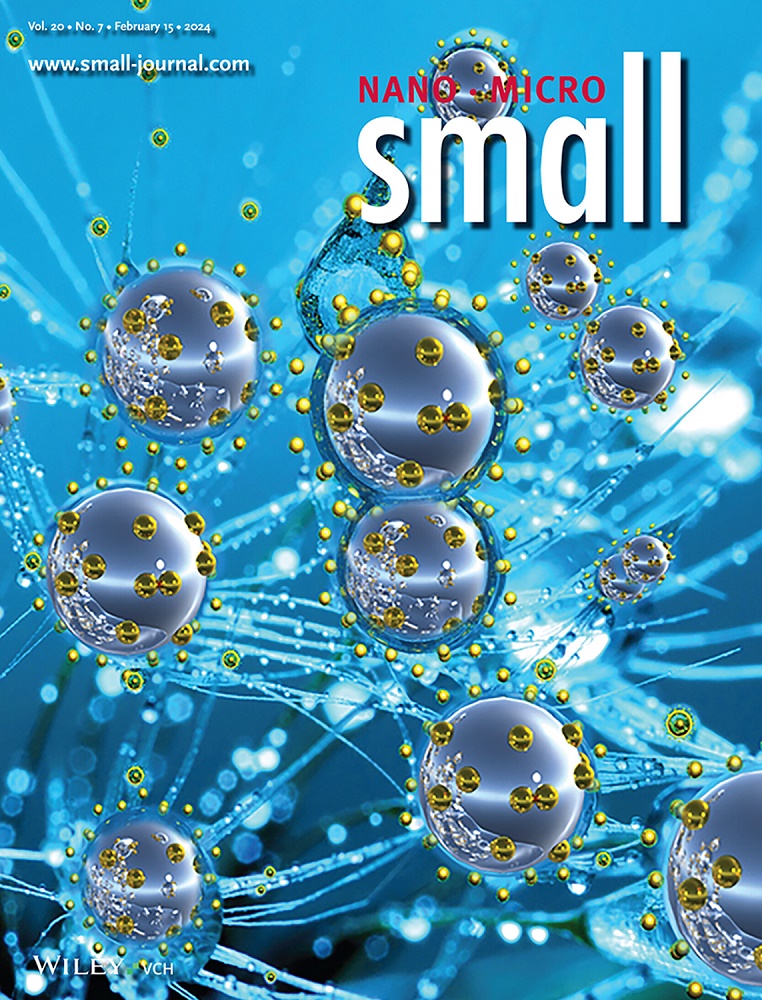Iridium-Based Mixed Transition Metal Oxide (Ir3MOx, M = Ni, Co, Fe) Incorporated in the Conducting Layer as an Electrocatalyst for Boosting the Oxygen Evolution Reaction
IF 12.1
2区 材料科学
Q1 CHEMISTRY, MULTIDISCIPLINARY
引用次数: 0
Abstract
Ir3MOx@CMI (M = Ni, Co, Fe) electrocatalysts are explored for the oxygen evolution reaction by embedding Ir3MOx within carbon matrix islands (CMIs) in direct contact with a titanium porous transport layer. Structural and compositional analyses reveal that incorporating transition metals not only enhances Ir particle dispersion but also modifies the morphology. The unique hierarchical structure of the Ir3MOx@CMI electrocatalyst improves its intrinsic OER activity and durability under severe acidic conditions. Among the electrocatalysts, Ir3CoOx@CMI demonstrates the highest intrinsic OER activity, achieving an overpotential of 233 mV at 10 mA cm−2, alongside a minimal charge transfer resistance of 1.57 Ω cm2 and a Tafel slope of 57 mV per dec. Additionally, it exhibits superior stability during both accelerated degradation testing (10k cycles) and chronopotentiometry over 200 h at 10 mA cm−2 in a half-cell stage, with a degradation rate of 35 µV h−1. Furthermore, this catalyst demonstrates improved water-splitting performance in the unit cell stage, achieving a cell voltage of 1.55 V at 1 A cm−2 while maintaining stability over 500 h at a current density of 1 A cm−2. These findings position Ir3CoOx@CMI as a promising candidate for sustainable hydrogen production in proton exchange membrane water electrolysis applications, offering enhanced performance and reduced Ir consumption.

铱基混合过渡金属氧化物(Ir3MOx, M = Ni, Co, Fe)作为电催化剂加入导电层促进析氧反应
Ir3MOx@CMI (M = Ni, Co, Fe)电催化剂通过将Ir3MOx包埋在碳基质岛(cmi)内,并与钛多孔传输层直接接触,探索了析氧反应的电催化剂。结构和成分分析表明,过渡金属的加入不仅提高了Ir粒子的分散性,而且改变了形貌。Ir3MOx@CMI电催化剂独特的层次结构提高了其内在OER活性和在强酸性条件下的耐久性。在电催化剂中,Ir3CoOx@CMI表现出最高的内在OER活性,在10 mA cm - 2下达到233 mV的过电位,最小电荷转移电阻为1.57 Ω cm2, Tafel斜率为57 mV / 12。此外,在加速降解测试(10k循环)和半电池阶段在10 mA cm - 2下超过200 h的时间电位测定中,它都表现出优异的稳定性,降解率为35µV h - 1。此外,该催化剂在单元电池阶段表现出更好的水分解性能,在1 a cm−2电流密度下达到1.55 V的电池电压,同时在1 a cm−2电流密度下保持500小时的稳定性。这些发现将Ir3CoOx@CMI定位为质子交换膜水电解应用中可持续制氢的有希望的候选者,提供增强的性能和减少的Ir消耗。
本文章由计算机程序翻译,如有差异,请以英文原文为准。
求助全文
约1分钟内获得全文
求助全文
来源期刊

Small
工程技术-材料科学:综合
CiteScore
17.70
自引率
3.80%
发文量
1830
审稿时长
2.1 months
期刊介绍:
Small serves as an exceptional platform for both experimental and theoretical studies in fundamental and applied interdisciplinary research at the nano- and microscale. The journal offers a compelling mix of peer-reviewed Research Articles, Reviews, Perspectives, and Comments.
With a remarkable 2022 Journal Impact Factor of 13.3 (Journal Citation Reports from Clarivate Analytics, 2023), Small remains among the top multidisciplinary journals, covering a wide range of topics at the interface of materials science, chemistry, physics, engineering, medicine, and biology.
Small's readership includes biochemists, biologists, biomedical scientists, chemists, engineers, information technologists, materials scientists, physicists, and theoreticians alike.
 求助内容:
求助内容: 应助结果提醒方式:
应助结果提醒方式:


